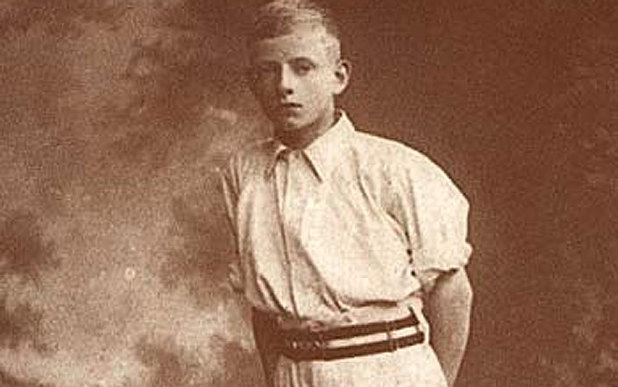AEJ Collins the boy whose record stood for 116 years
2 Min Read


About 116 years ago, on June 1899, 13-year-old Arthur Edward Jeune Collins achieved a feat that was unimaginable to be seen in the record books. AEJ Collins batted four afternoons, in all, six hours and fifty minutes to score 628 not out for Clarke’s House against North Town, in a junior house match at Clifton College. The innings comprised of one 6, four 5’s, 31 boundaries, 36 3’s, and 146 doubles. The young boy carried his bat through the innings with his team, Clarke’s score being 836 all out. They eventually won the match comfortably by an innings and 688 runs.
Since, then there have been millions of cricketers who, at various levels, belonging to different age-groups picked up their bats and scored tons of runs but none of them have ever come close to breaking this humongous individual record.
The famous match:
Collins was born at Hazaribagh, now in Jharkhand in 1885, where his father was a judge. Before Arthur Collins entered the Clarke’s house, a Clifton schoolboy named Edward Tylecote held the record for the previous best after he had scored 404 not out on the Close in 1868, the then all-time highest individual total. There were five other higher quadruple-centuries which were made, including A C MacLaren’s 1895 first-class record of 424 for Lancashire v Somerset, and A.E Stoddart’s 485 for Hampstead v The Stoics in 1886.
The match commenced on 2nd June, Collins opened the innings and scored 200 by the end of the afternoon and by the end of the second day he had surpassed the mark of 500 and beat the 485 by A.E Stoddart. His concentration was hard and looked immortal. However, he ran out of batting partners after the last wicket partnership of 196 runs was broken after his last batting partner Thomas Redfern (13 runs) was dismissed, leaving him stranded at an epic 698* runs.
Luck played its part in the famous match as he was dropped on 50, 100, 140, 400, 556, 605 and 619. Collin’s domination did not end there as he contributed with the ball as well. The opposition, North Town were dismissed for 87 and 61 respectively with Collins taking 11 for 63 in the two innings. The scorebook hangs in the pavilion at Clifton to this day. The scorers faced a difficult task in accurately recording the innings. One of them, Edward Pegler, is said to have remarked that Collins’s score was “628, plus or minus twenty shall we say.”
Collins’s record-making innings drew a large crowd and increasing media interest; spectators at the Old Cliftonian match being played nearby were drawn away to watch the junior school house cricket match in which Collins was playing. Regular school life was disrupted and newspapers including Times reported the match.
Choose military over professional cricket:
This sextuple feat might have made everyone guess for what followed in his cricket career. Sadly, there is nothing exciting to tell as he never took his cricket career seriously and his military duties mattered to him the most. Collins never even played first-class cricket.
In 1902, he was in the College XI, in the former year scoring 342 runs with an average of 38.00, his highest innings being 112 against Old Cliftonians. Later, after joining British military and becoming a soldier in 1902, he made many good scores in Army matches. His last innings was at Aldershot in July 1914 when he struck five fours from successive deliveries before being bowled off the sixth.
Collins was commissioned and returned to India. In 1914, four month after his marriage, Captain AEJ Collins, RE, left to fight in France for the First World War but never returned. He was killed in action in November 1914 during the First Battle of Ypres in Belgium, aged just 29.
The record that stood for 116 years:
Just two years after his feat, 31-year-old Australian Test cricketer Charles Eady came close to breaking the record, when he made 566 for Break-o’-Day against Wellington in Hobart in less than eight hours spread over three weeks in March 1902. Over the years, only five other players, Prithvi Shaw (546), Dadabhoy Havewala (515), JC Sharp (505 not out), Malhotra Chamanlal (502 not out), and Brian Lara (501 not out) have ever scored more than 500 runs in one innings in any form of cricket. His score was finally beaten in January 2016 by Pranav Dhanawade, a 15-year-old Indian boy who scored 1,009 not out from 323 balls for KC Gandhi School against Arya Gurukul School in Mumbai.
Here is the boy who broke Collins’ record – Mumbai’s Pranav Dhanawade becomes the first player to score 1000 runs in an innings
Download Our App